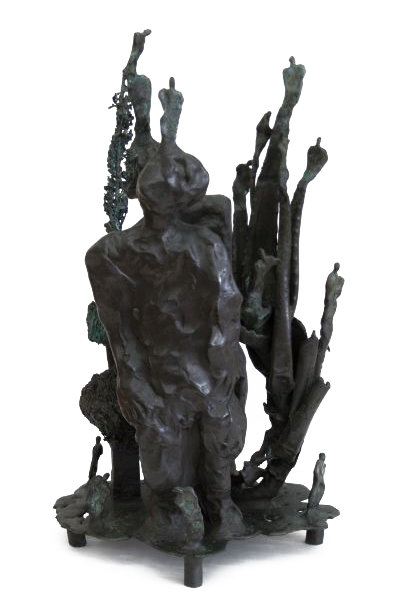
Sculptures and sculptures
Artists
Sculpture after 1945
A central focus in the gallery program is Austrian sculpture after 1945 with works by Fritz Wotruba (1907–1975) and sculptors of the first and second generation after Wotruba.
After 1945 Austria’s sculptural work achieved international status. The Austrian sculptor Fritz Wotruba was appointed by Herbert Boeckl, the rector of the Academy of Fine Arts in Vienna, from exile in Switzerland to head a master class in Vienna.
Vienna becomes the center of sculpture in Europe, shaped by Fritz Wotruba, whose influence extended far beyond his artistic work.
When he returned to Vienna, Wotruba reacted to the so-called “modernity”; he took up the results of classical Cubism. Instead of recreating anatomical shapes, he looks for basic structures by breaking them down into individual elements in order to build a new whole. He sees the human body as an architectural element.
Wotruba developed into a representative of classical modernism and an internationally recognized sculptor and important Austrian sculptor of the 20th century.
He influenced his successor generation especially with regard to the examination of his big topic, the human figure. He is concerned with the search for an origin from which his static, heavy, silent, self-contained sculptures arise.
From 1946 Fritz Wotruba trained a number of artistic personalities in his master school for sculpture at the Academy of Fine Arts in Vienna, who continued Wotruba’s high level in their own works, including Herbert Albrecht, Joannis Avramidis, Otto Eder, Alfred Hrdlicka, Heinz Leinfellner, Josef Pillhofer, Erwin Reiter, Andreas Judgment, …

